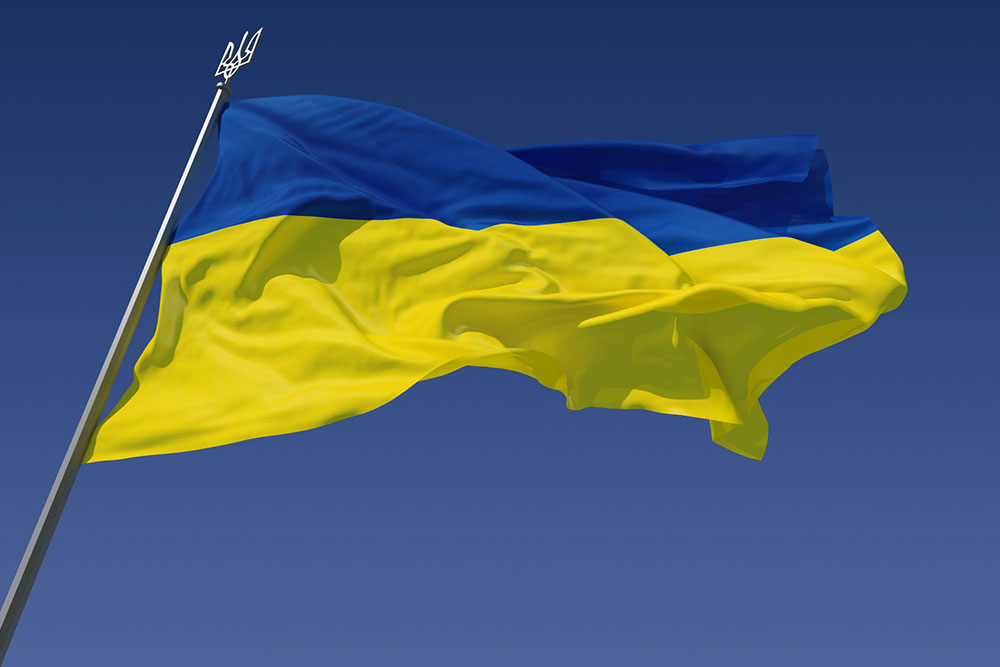Could it become “the next Poland” for investors?
By Hamlin Lovell, NordicInvestor
If Russian stocks may be some of the cheapest in emerging markets, certain equities in neighbouring Ukraine may have some of the lowest valuations in the frontier market universe.
This partly reflects the economic and political risks: Ukraine’s economy contracted by 16% between 2014-2015 around the conflict with Russia, which continues to occupy separatist territories in the Donbas (Donetsk and Luhansk) region in Eastern Ukraine. Over 100 banks have been shut down since 2014, some after failing stress tests and others due to various illegal activity, including money laundering. With no overall majority in the parliament (called Verkhovna Rada)– and at least ten different political groups – the quantum and pace of political and economic reform remains unpredictable. IMF support is conditional upon pension, privatisation and anti-corruption reforms being enacted. Economic growth has only recovered to about 3%, which is slower than most frontier markets, partly because the population continues to decline as Ukrainians move to countries such as Poland and the Czech Republic, to find work. Still, 3% is not bad by Eastern European standards – Asian countries in general are growing faster, partly as they have bigger pools of domestic savings to fund investment.
The positive scenario is that Ukraine steadily takes steps towards joining the European Union, and then has a similar growth story to Poland, which in 1990 had the same GDP per head – but now boasts an economy three times as large, and has just been upgraded to “developed market” status by FTSE Russell.
The 2014 revolution in Ukraine replaced corrupt Yanukovych (who has misappropriated at least USD 1.5 billion – and counting – from his country) with pro-European Poroshenko. At the 20th EU-Ukraine Summit in July 2018, Ukraine and the EU committed to “strengthening the political association and economic integration of Ukraine with the European Union, on the basis of the Association Agreement”. Ukraine has a Deep and Comprehensive Free Trade Area (DCFTA) agreement with the EU, and EU-Ukraine trade has advanced 24% to $37 billion last year. Ryanair started flying to Ukraine in September 2018, while Swedish retailer, H&M, opened its first store in Ukraine this year, and IKEA will do the same next year.
Clearly, Russia views Ukraine as forming part of its sphere of influence, and does not want it to join the EU, but Ukraine is moving away from Russian influence in many ways: the Patriarch of the Orthodox church should very soon grant Ukraine autocephaly – its own church – independent of the Russian orthodox church. Ukraine has also ceased buying gas from Russia, and Sweden’s arbitration court has ruled against Russia’s Gazprom, in a dispute over gas pipeline fees.
Commodities
As with Russia, natural resources are important so Ukraine is partly a play on higher prices for commodities, which make up two thirds of Ukraine’s exports. Its black soil is a fertile ground for growing grains, seeds and crops. “The country boasts the world’s 7th largest proven coal deposits (4% of world total, approximately 34 billion tonnes) and crude iron ore reserves. According to the U.S. Energy Information Administration, Ukraine has the 3rd largest technically recoverable shale gas resources in Europe (1.2 trillion cubic meters), after France and Norway”, says a research report from Kiev-based Dragon Capital.
Equity market
Food and agriculture, metals and mining, and banks, together make up over 80% of the market.
With local interest rates of 17.5% as of September 2018, the cost of capital used to value Ukrainian companies could be at least 25%, which creates potential upside if a stabilisation of currency markets and inflation lets the central bank cuts rates in future. Rates had been as low as 11% in mid-2017, but have been raised partly to defend the currency.
According to Dragon capital, equities that only have local listings trade at lower valuations than those which also have foreign listings – such as Ferrexpo, and JKX Oil and Gas, on the UK’s LSE (JKX has nearly tripled from 11p to 29p this year); or Ovostar Union, IMC and Astarta Holidngs, listed on Poland’s Warsaw Stock Exchange. Over 99% of trading volume occurs in foreign listed stocks.
There are only 104 domestically listed stocks, and liquidity is very poor compared with other Eastern European markets. Most domestic stocks are not realistically investible for institutional investors on a day-to-day basis, but they might occasionally find a block of stock from another holder. Still, the sizes involved are tiny for institutions – some electricity generation companies, such as Donbasenergo, have a market capitalisation of tens of millions of USD, with a free float of only 15%.
Privatisations may increase the range of listed companies and levels of liquidity in the market. For instance, minority stakes in power generation and distribution companies have been sold. State-owned banks – such as the country’s largest, now incorrectly named Privatbank – may eventually be re-privatised.
As Ukraine is a small market, emerging market ETFs have less than 0.5% in Ukraine. We are not aware of any pure Ukraine ETF (Global X filed to launch one in 2011, but it does not exist now).
Government debt and GDP warrants
Ukrainian government debt is a mix of local currency, Eurobonds, and a bilateral loan from Russia (that is currently being argued over in London’s High Court, as it was issued under English law). Ukraine’s GDP warrants were issued as part of the 2015 sovereign Eurobond restructuring, as compensation for the nominal haircut on the debt. Annual payments are based on a formula with various conditions. They are linked to Ukraine’s real GDP growth between 2019 and 2038: growth must exceed 3% for coupons to be triggered in any year, and Ukraine’s USD-denominated GDP must exceed $125.4 billion. Basically, bondholders get 15% of GDP growth between 3% and 4%, and 40% of GDP growth above 4%, subject to an overall cap on coupon payments of 1% of GDP. Readers could get hold of Dragon Capital’s research note for more detailed analysis.
Pivot Capital CIO, Carl George, expressed the view that the Ukrainian GDP warrants are an interesting long-term investment, speaking in June 2018, at the Sohn Conference Foundation event held in Monaco, where Pivot are also based. (The Sohn Conference Foundation raises money to fund research and treatments for children with cancer).
Corporate debt
Corporate bond issuers include banks, energy companies, iron ore miner Ferrexpo, agricultural groups Mriya Agro Holding and UkrLand Farming; chicken farmer MHP, egg producer Avangard, sunflower seed and grain farmer Kernel; along with quasi-sovereigns such as Ukrainian Railways. They tend to pay some spread over the sovereign.
Private equity
Dragon Capital has been investing in private equity since 2001, and in 2015 launched a vehicle – Dragon Capital New Ukraine Fund – together with the Ukrainian Redevelopment Fund, LP, which is advised by Soros Fund Management LLC.
Anders Ostlund, a Swedish national based in Kiev, has founded Ukraina Invest to help foreign investors identify opportunities in Ukraine. He told Nordic Investor “After nine years in Kiev I have an enormous network and a very strong pipeline of deal flow. IT is growing very fast, ranging from basic data entry to programming and internet outsourcing.”.
He also cautions that land and agricultural investments have proved disappointing and even disastrous for foreign investors, such as those in a Ukrainian agricultural holding company, who recovered only 5% of their investment.
Carrying out due diligence in Ukraine can be very challenging as Ostlund warns “people underestimate the challenges of investing in Ukraine. Some partnerships were not documented, as the true owners may hold stakes through informal structures and intermediaries. Debts are not always disclosed. There are many registers and much bureaucracy. Tax registration records may not be accurate. Corruption is being addressed, but has not been fully dealt with”.
As with any frontier market, there are pitfalls for the unwary, but there could be great rewards if Ukraine can triple its GDP over the next generation.





